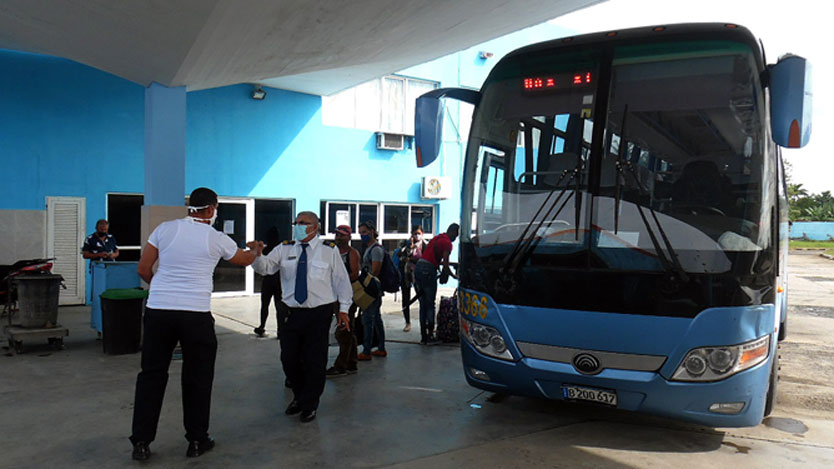Transporting 155,681 passengers through freight and interurban services is the plan of the Base Business Unit (UEB) of National Buses in Ciego de Ávila, a figure not as pretentious as that of 2022, which was not consummated and amounted to more than 230,000.

That the coefficient of technical availability is below 50 percent, that is, that eight or less of 17 buses work, in some periods of time due to a shortage of batteries, tires, spare parts and glassware, caused the previous year and causes now a series of difficulties.
The first of these was the non-compliance with the transportation plan for freight; since of 180,912 passengers for 2022, 84,313 were missing when completing the statistics for the year, Inaudis Figuera Ferrer, head of the operations group in the province, says.
This led to the UEB's corporate purpose not producing profits, but rather the opposite, due to the cost of parts and pieces themselves (a tire costs around 7,000 pesos), María Caridad Águila Cuéllar, head of the Accounting and Finance group, states.
Economically, the loss in Ciego de Ávila was 504,000 pesos, tiny compared to 2021 that ended with around three million in red numbers, largely due to the ravages of COVID-19. A panorama far removed from the figures of five years ago, when the entity's profits could exceed five million pesos.
As of June 2022 ― Águila Cuéllar explains ― the Ministry of Transportation began to subsidize the interprovincial service with a value per seat of 0.05 cents per kilometer, which increases monthly income to approximately 180,000 pesos. Since October, the freight transportation rate has risen from 6.96 to 13.96. Therefore, the prospects in 2023 are that the UEB ends with profits of over 1,149,000 pesos, estimates the directive.
Back in 2022, and in accordance with the proposed objective, the UEB exceeded the programming of the interurban service, since of 54,070 planned passengers they transferred 101,206. It is clear that the figure does not say it all nor does it mean improvements in this indicator, because six is the number of routes today, four less than in 2019, for example, before the coronavirus pandemic outbreak, when plans were also doubling.
The four routes eliminated are those corresponding to Niquero, Camagüey, Cienfuegos and Havana, the latter with a departure time of 1:30 pm. Trips from Ciego de Ávila have two weekly frequencies to Holguín and Manzanillo, three to Santiago de Cuba and Havana (11:40 pm), plus another with the same daily destination at 5:45 am and from Morón to the capital, Tuesday and Saturdays.
Because of the reduction in itineraries, there was, of course, a reduction in the driver workforce. The UEB currently has 24, which should have 22, Rafael Céspedes Pacheco, head of the Human Resources group, underlines.
However, this does not entail violating the regulations that two drivers travel on the bus. In the pool of applicants ―he adds― there are four drivers, who are evaluated by the automotive security group to send them to the training course and to perform psychometric tests in Havana.
As a positive balance, María Julia Ruiz Pol, a technician in rational use of energy, contributes that there was no shortage of fuel, since the UEB received more than what they required, 410 tons (t) last year, for which, in this 2023 the rate will drop to about 390 t.




